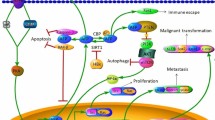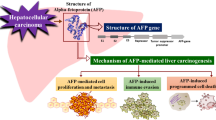Abstract
Subjective: The purpose of investigating the carcinohistogenesis of hepatocarcinoma and alpha-fetoprotein AFP expression in oncogenesis was to lay a morphological foundation for diagnosing and curing hepatocarcinoma. Methods: Experimental hepato carcinoma of Wistar rats induced by 0.04% 3′-Me-DAB and killed according to different dates. All the animals were killed during a period of 36 weeks. The morphologic changes of dynamics and expression of (AFP) with immunohistochemical method were observed. Results: Hyperplasia of oval cells was multipotento-differential stem cell. It was further differentiated into transitional cell and embryoid small liver cell, and the latter can form pattern of atypical hyperplasia, which scattered or crowded. The AFP in these cells showed was a strong positive expression. The feature was different between crowded small hepatocytes of atypical hyperplasia and proliferative nodules of hepatocytes. The former was similar to morphologic character of liver cell carcinoma. The oval cells were toward biliary duct differentiation to form fibroadenomatoid structure, and atypical hyperplasia was also seen in their epithelial cells. Of all the 58 experimental animals there were 26 with hepatocarcinoma, among which 18 cases of hepatocytic carcinoma and 8 mixed carcinoma were found. The hepatocellular carcinoma showed AFP strong positive expression In the host hestocytes around cancer and hepatocytes of non-neoplastic animals of a later experimental period also expressed various degrees of AFP positive. Conclusion: Atypical hyperplasia of small hepatocytes and epithelial cells of bile canaliculi were the precancerous lesions of hepatocellular carcinoma and bile duct carcinoma.
Similar content being viewed by others
References
Anthony PP, Vogel CL, Barker LF. Liver cell dysplasia. A premalignant condition. J Clini Pathol 1973; 26:217.
Roncalli M, Borzio M, Biagi GD, et al. Liver cell dysphasia in cirrhosis serologic and immunohistochemical study. Cancer 1986; 57: 1515.
Xu YD, Zhang ZC, Zhang JS, et al. Pathological study of hepatocarcinogenesis in rts induced by 3′-Me-DAB. Chin J Pathol 1988; 17:87.
Khamzina L, Eraiser T, Borgeat P. Alpha fetoprotein (AFP) expression in clones of MCA-RH7777 rat hepatoma: correlation with the occurrence of homogeneously staining regions on chromosome 14. Cancer Res 1995; 55: 3615.
Dai YM, Ni CR. Preliminary study of the origin of alpha-fetoprotein (AFP) in the host hepatocytes of human liver cancer: Immunohistochemical analysis of 48 casés. Chin J Pathol 1988; 17: 247.
Dempo K, Shisak N, Yoshida Y, et al. Immunofluorescent study on a -Fetoprotein producing cell in the early stage of 3-Methyl-4-dimethylaminoazobenzene. Cancer Res 1975; 35: 1282.
Hixson DC, Affigne S, Faris RA, et al. Delineation of antigenic pathways of ethionine induced liver cancer in the rat. Pathology 1996; 64: 79.
Author information
Authors and Affiliations
Rights and permissions
About this article
Cite this article
Zhang, J. Carcinohistogenesis and expression of alpha fetoprotein in experimental hepatocarcinoma. Chinese Journal of Cancer Research 11, 118–121 (1999). https://doi.org/10.1007/BF02948451
Accepted:
Issue Date:
DOI: https://doi.org/10.1007/BF02948451




